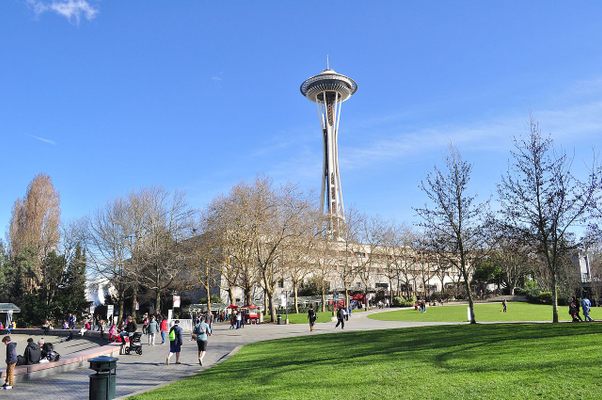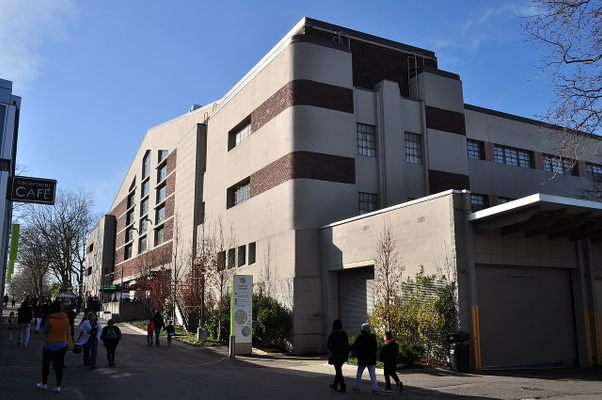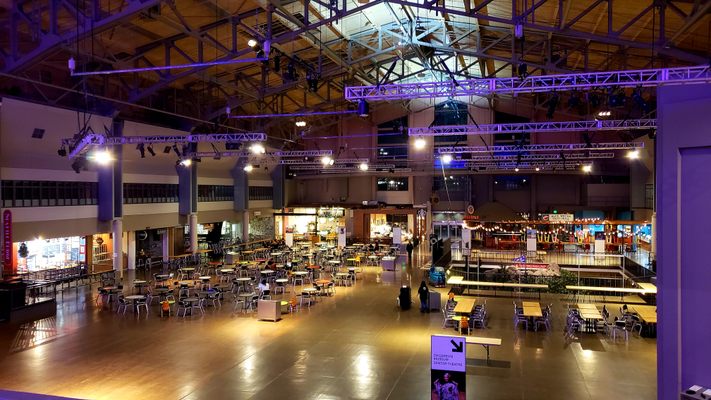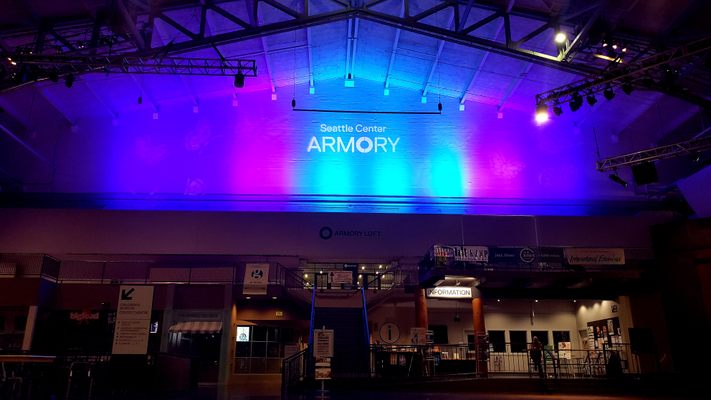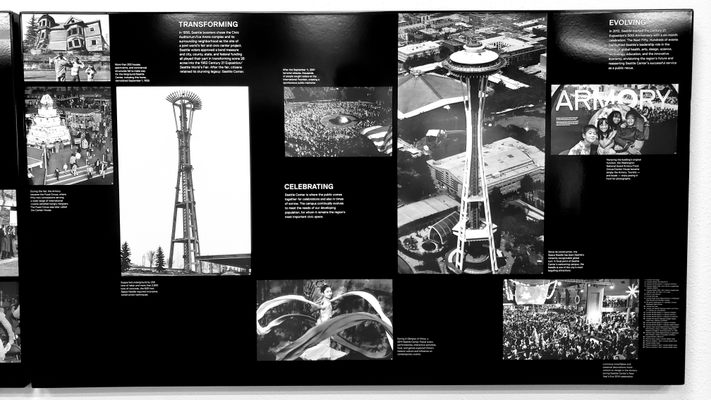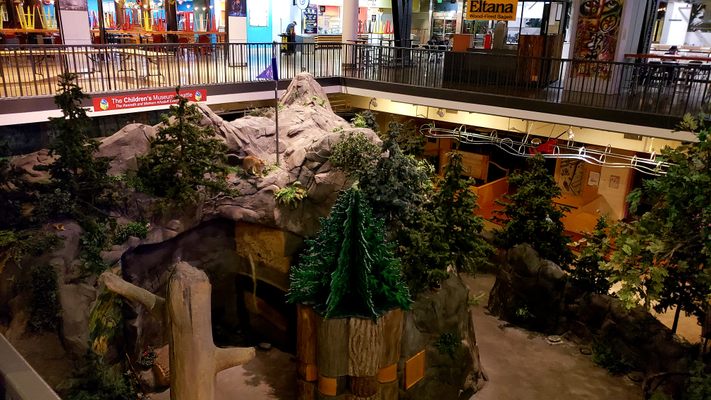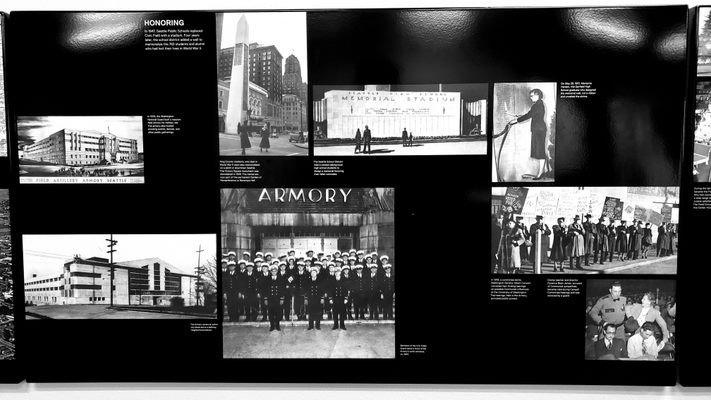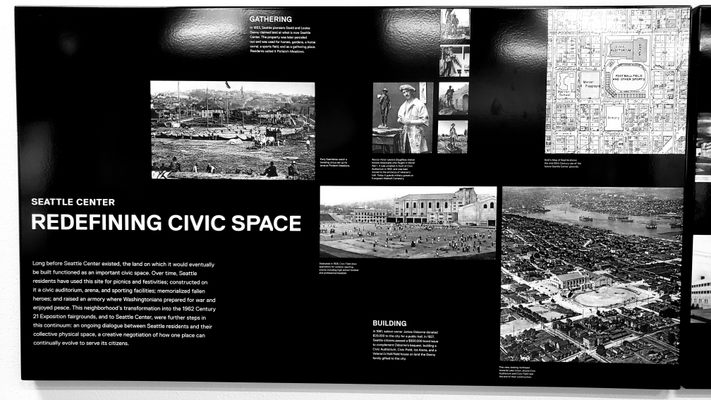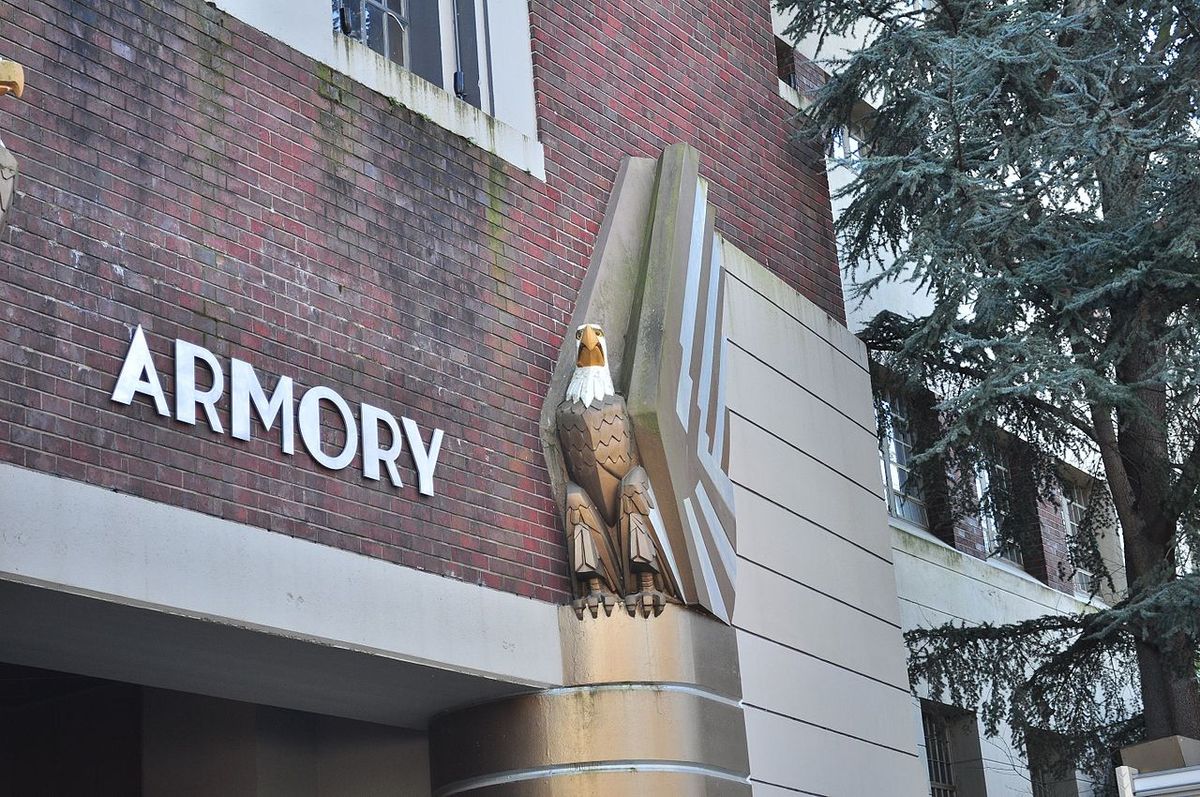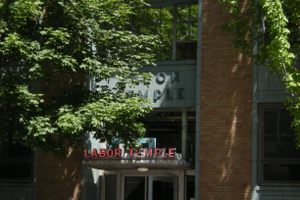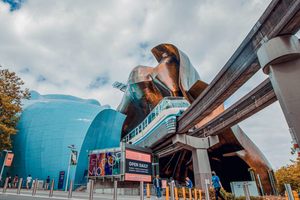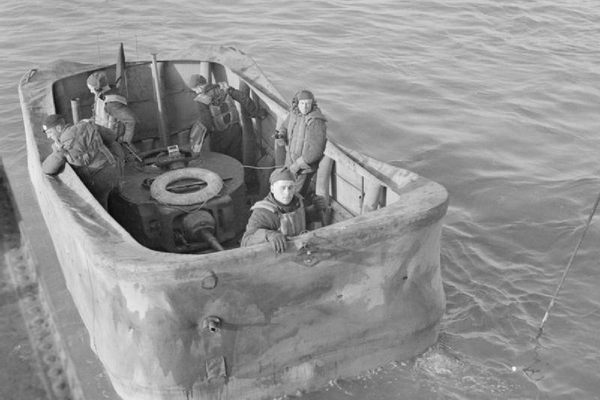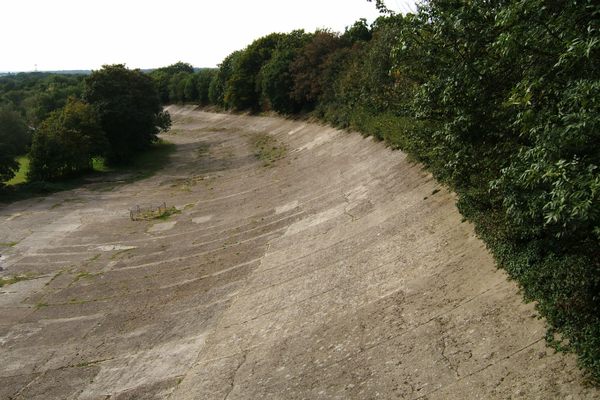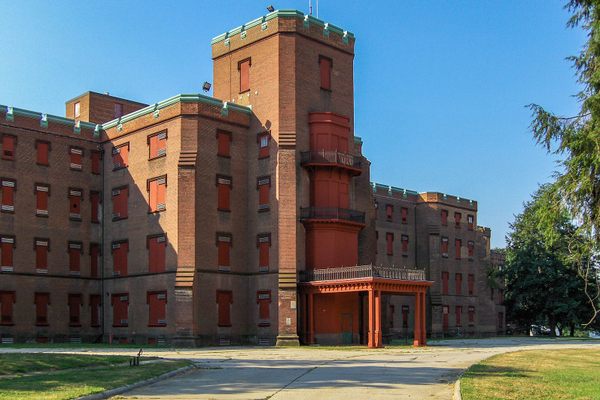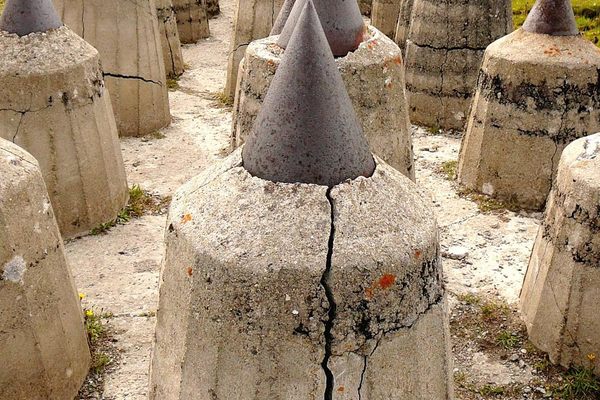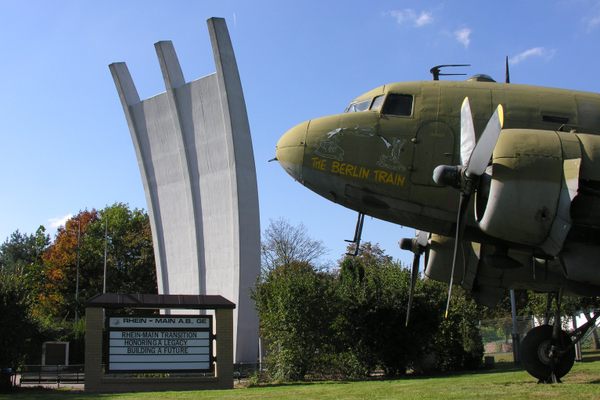About
The Seattle Center Armory has been through plenty of changes since its construction in 1939. Built as a near-impenetrable armory building, it has since hosted everything from half-ton tanks to Duke Ellington, the 1962 World’s Fair, and modern Seattle foodies.
After a few years of lobbying, the Seattle Field Artillery Armory was finally completed in 1939. Built by the Washington National Guard for use by the 146th Field Artillery, the 66th Field Artillery Brigade, and the 41st Division of the National Guard, the huge structure covered an entire city block at a cost of $1.25 million.
At the time, it was a state-of-the-art example of armory construction: a poured-in-place concrete structure with walls thick enough to be almost impenetrable, and yet designed with a certain consideration for style, with its curved edges and decorative concrete eagles sitting proudly above the main entrance.
Initially a storage point for tanks and other armaments, it wasn’t long before the armory began to morph into something else. When the U.S. entered World War II in December 1941, the building was refurbished to house visiting servicemen, with the addition of 500 beds, restrooms, showers, and air conditioning. The Women’s Ambulance Corps also trained in the armory, and for a while, it served as the headquarters for the Civilian Protection unit, tasked with providing enemy-aircraft warning information.
At the same time, the building was used for community events. Scout meetings, proms, dances, and concerts took place during and after the war, most famously when Duke Ellington and his band played at the University of Washington’s 1941 junior prom.
In the 1950s, the armory found itself at the heart of a grand new project: the 1962 Seattle World’s Fair. Many buildings surrounding the armory were demolished to make way for the 74-acre fairground, but the armory was converted into a 52-stand culinary exhibition known as the Food Circus (complete with a 12.5-ton layer cake). And around it sprung up iconic landmarks like the Space Needle, the monorail, museums, and sports venues that form part of what is now called the Seattle Center.
The next renovations came in the early 1970s, when the Food Circus was renamed Center House and the focus shifted from food to include public arts programming, family entertainment, the Children's Museum, and a wide range of cultural events.
The next big change came in 2012, with extensive renovations to mark the 50th anniversary of the World’s Fair. The walls were stripped back to their original concrete, removing much of the detritus that had built up over the years. Many of the old food stalls, with their equally outdated food, were replaced with hip new restaurants like Skillet Counter, Bigfood, Plum Pantry, and Eltana.
With the focus shifted back towards eating, and with more of the building’s history on show, the name was changed from Center House to Seattle Center Armory. And along with the much-improved food, the armory still hosts more than 3,000 free public performances each year.
As for the history, not quite all of it is on show. Deep in the basement and off-limits to the public is the armory’s former shooting range, its walls still dotted with bullet marks. Near the range are the remains of a half-finished swimming pool originally built for recruits, but never completed and later filled in with dirt.
Related Tags
Know Before You Go
Seattle Center Armory is located at the heart of the Seattle Center, where you’ll also find the Space Needle. The Armory opens from 7 a.m. to 9 p.m. Sunday through Thursday, and until 10 p.m. on Friday and Saturday (it doesn’t open on Thanksgiving, Christmas Day or New Year’s Day).
Community Contributors
Added By
Edited By
Published
December 13, 2018
Sources
- https://seattle.curbed.com/2018/11/29/18115475/seattle-center-house-armory-history
- http://www.seattlecenter.com/locations/detail.aspx?id=41
- https://patch.com/washington/gigharbor/bp--the-seattle-center-armory-formerly-seattle-center18bff089f6
- http://www.historylink.org/File/1321
- https://blog.seattlepi.com/thebigblog/2010/09/27/p-i-archive-the-shooting-range-and-pool-at-seattle-center/

